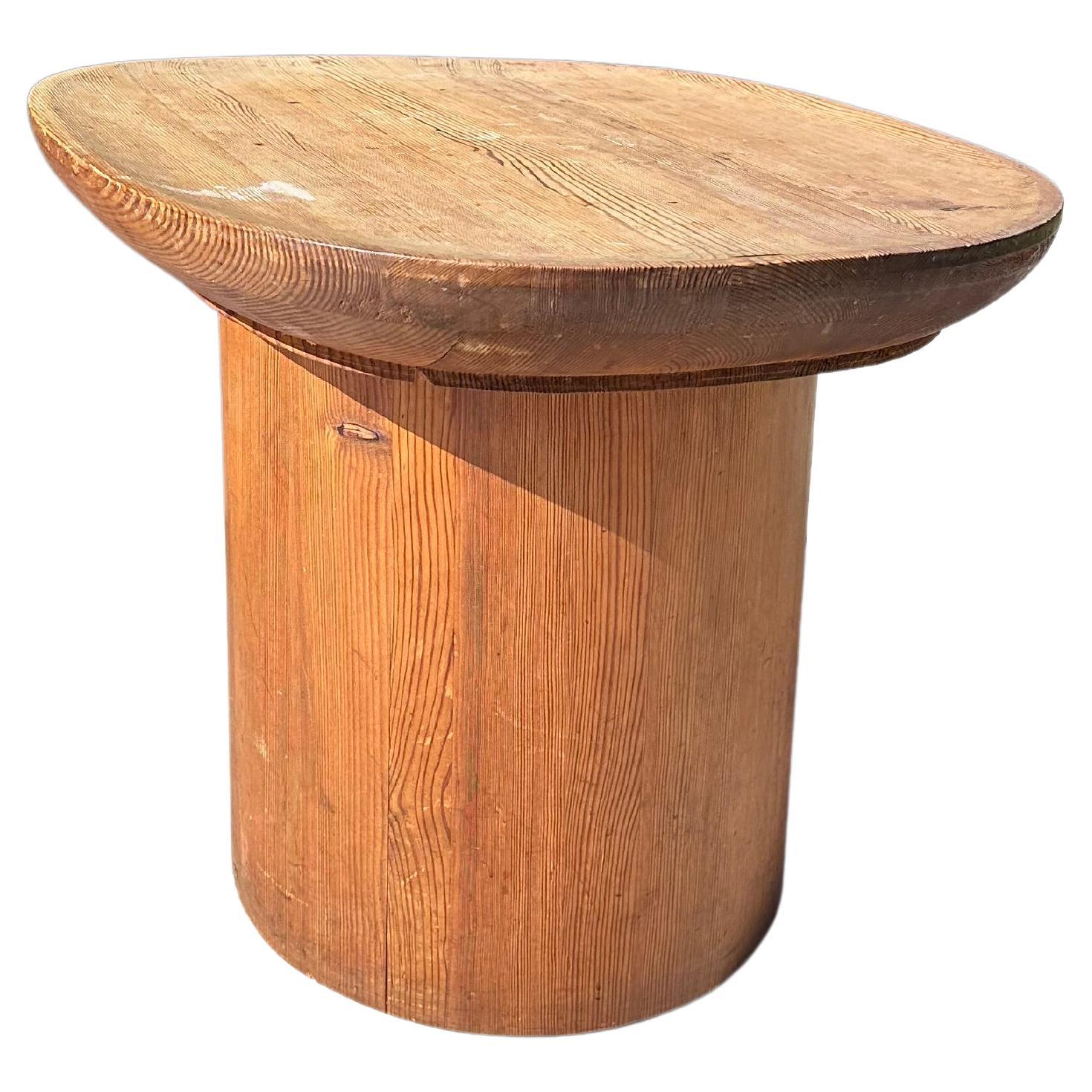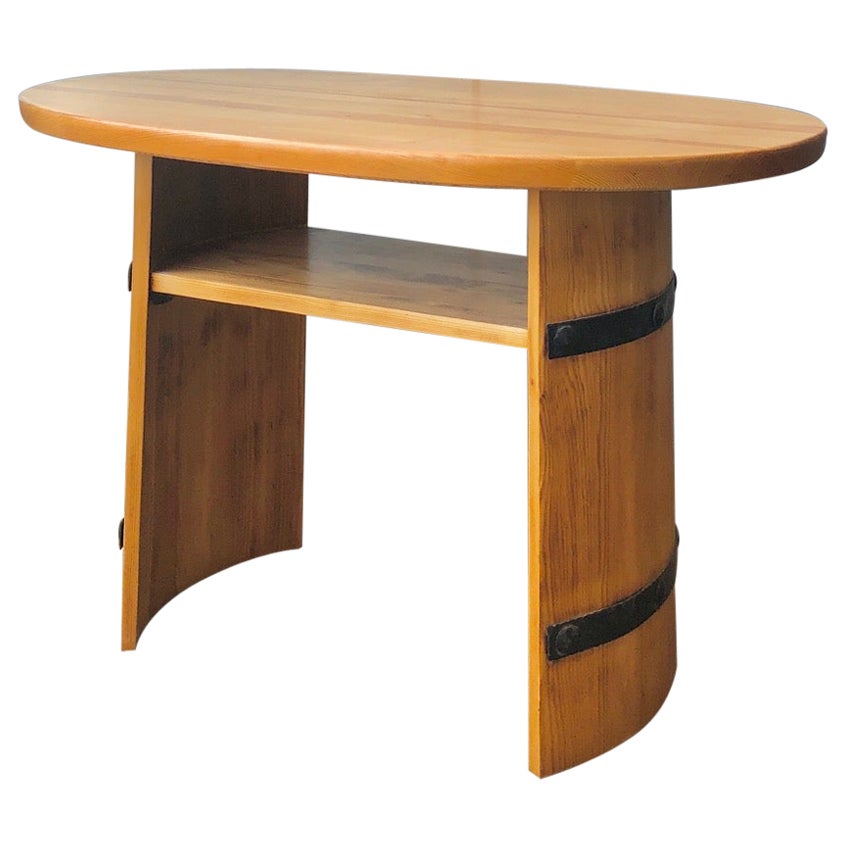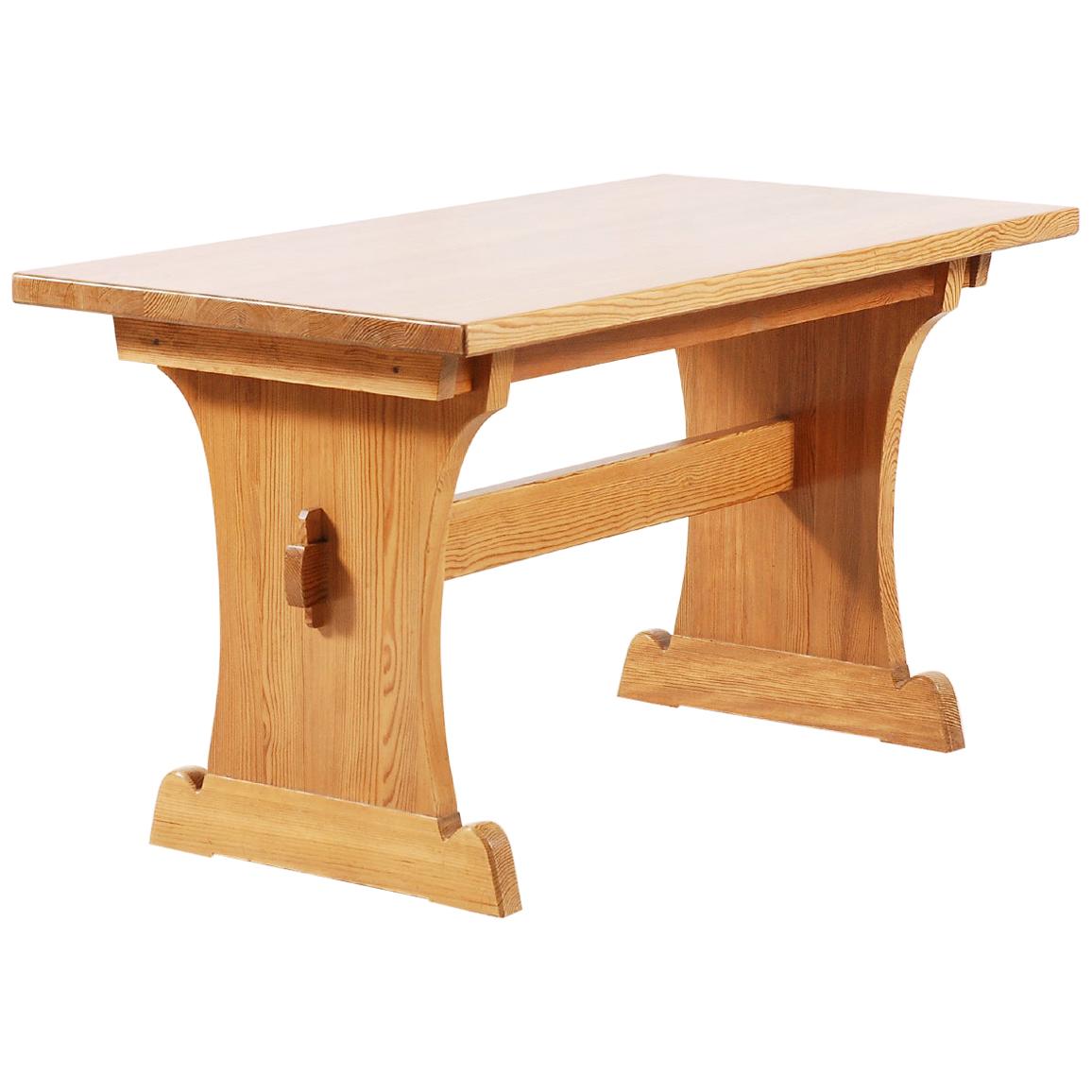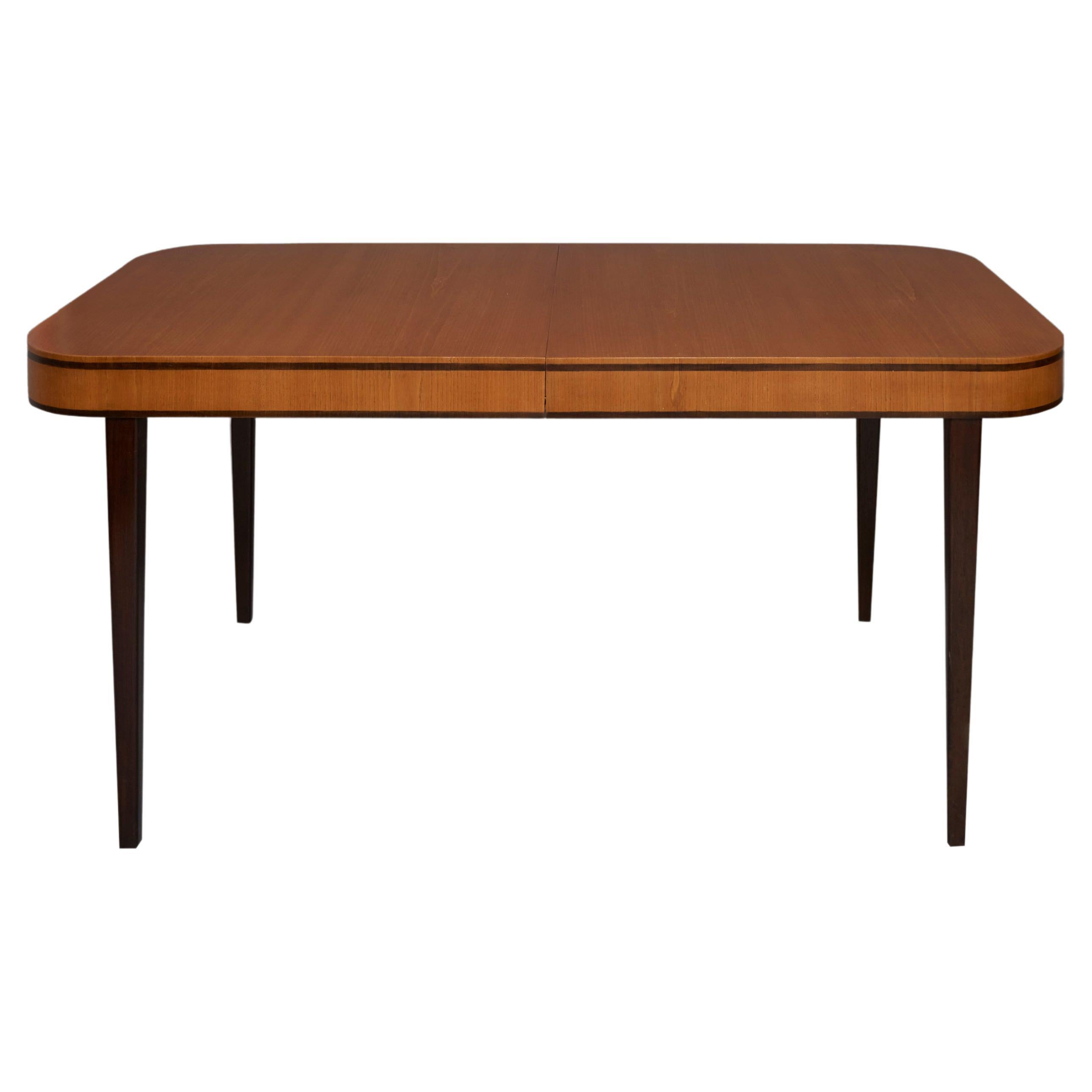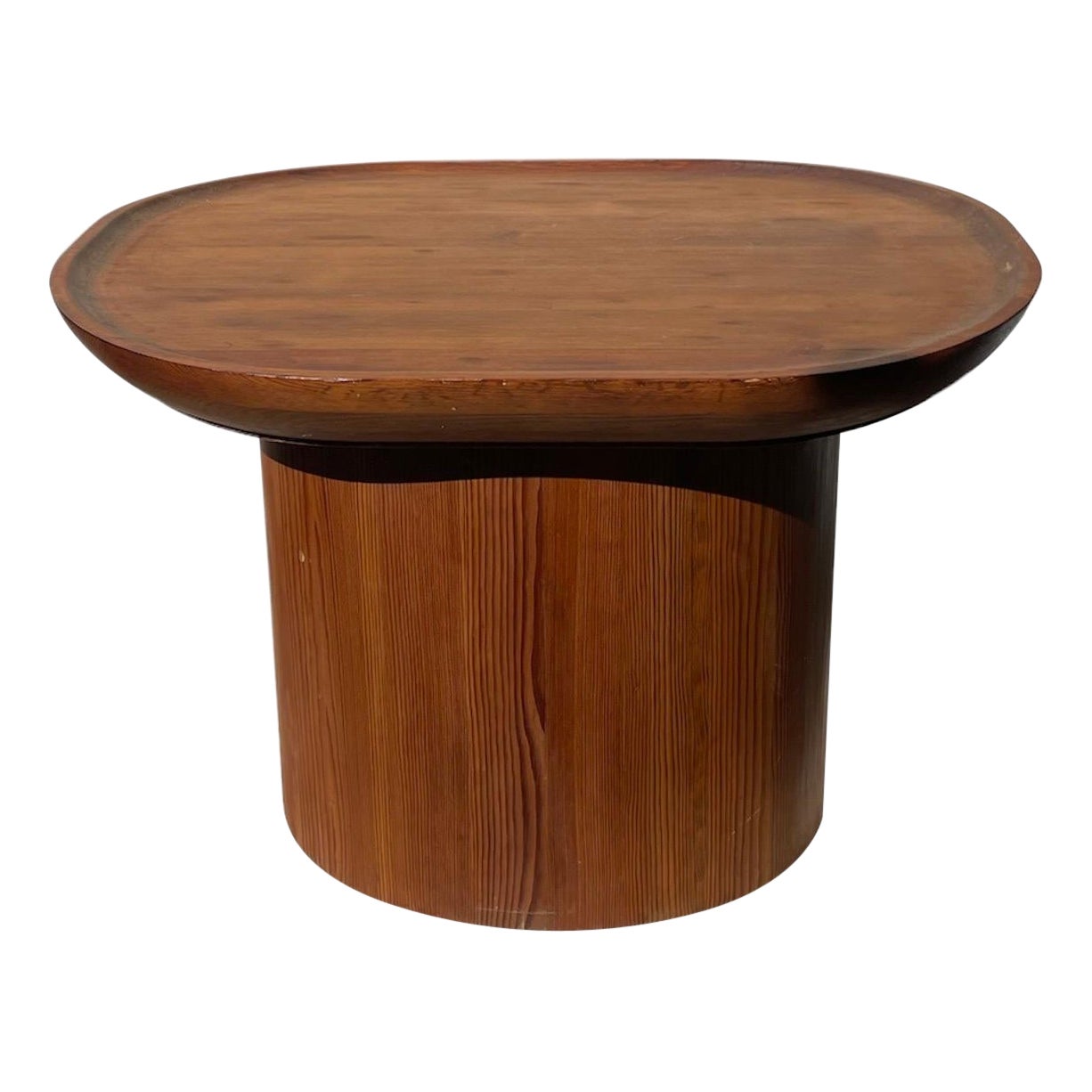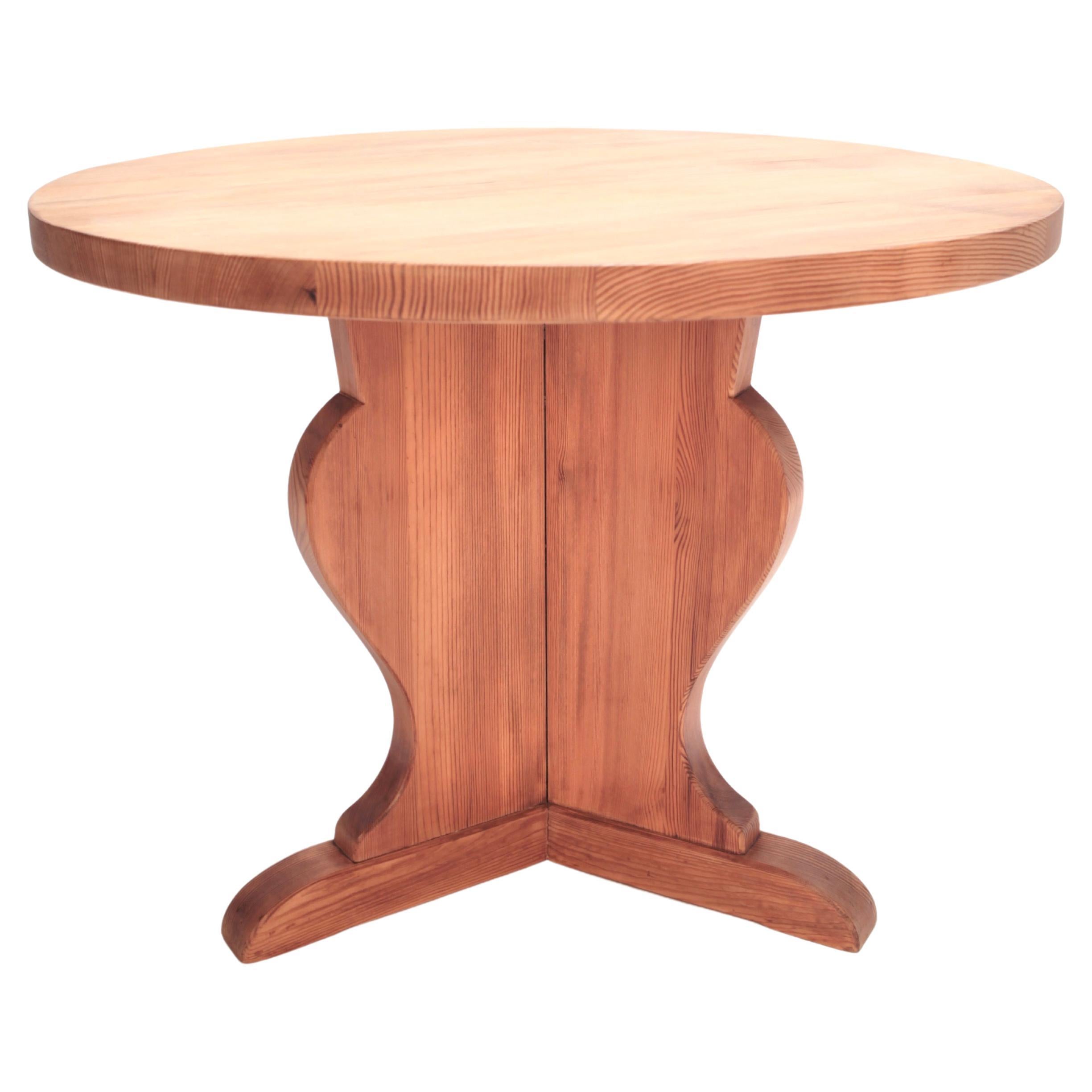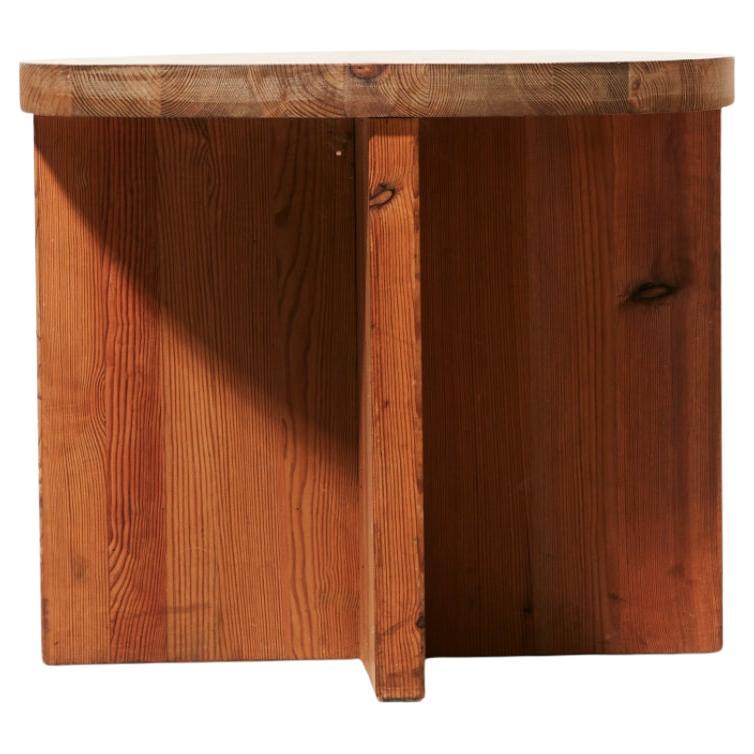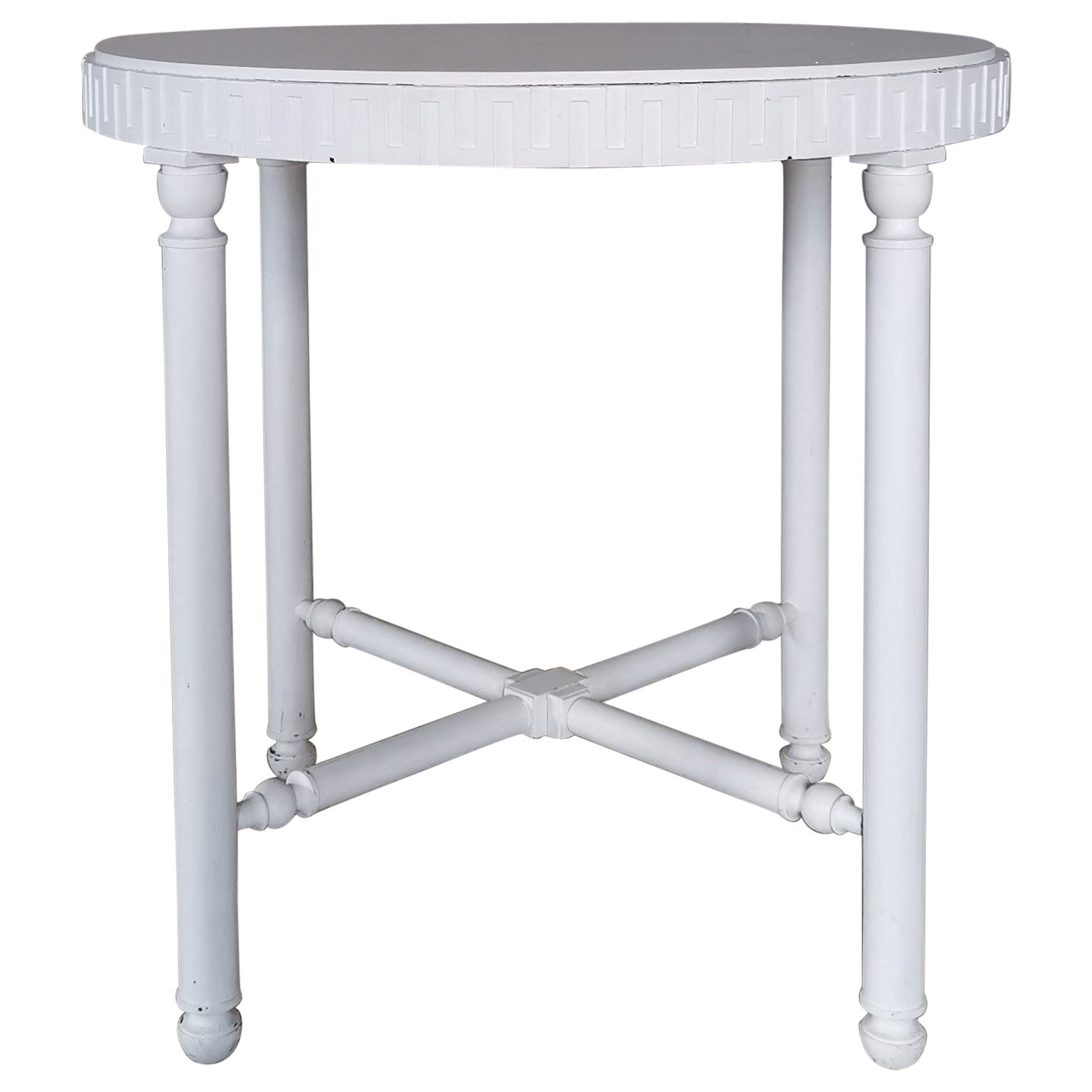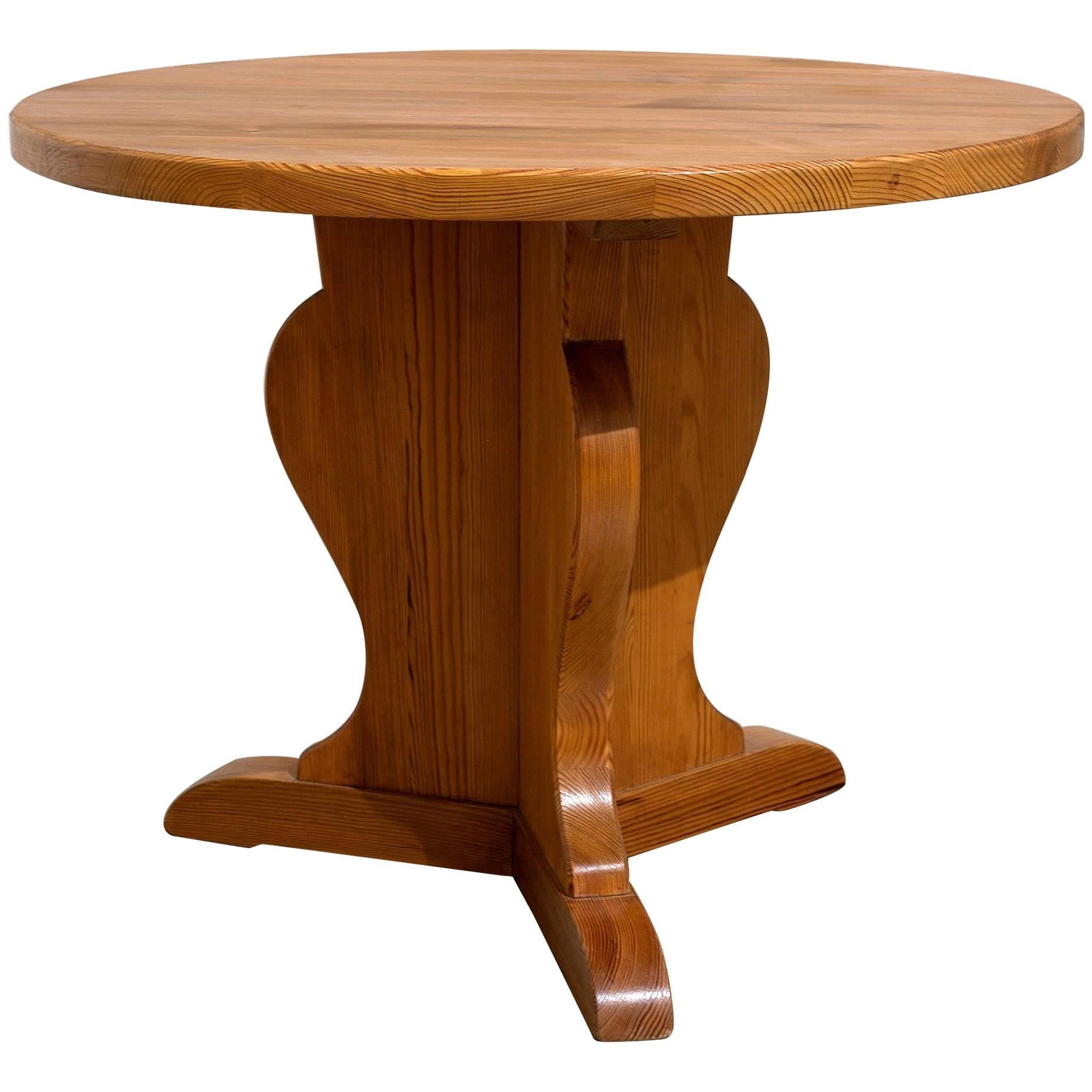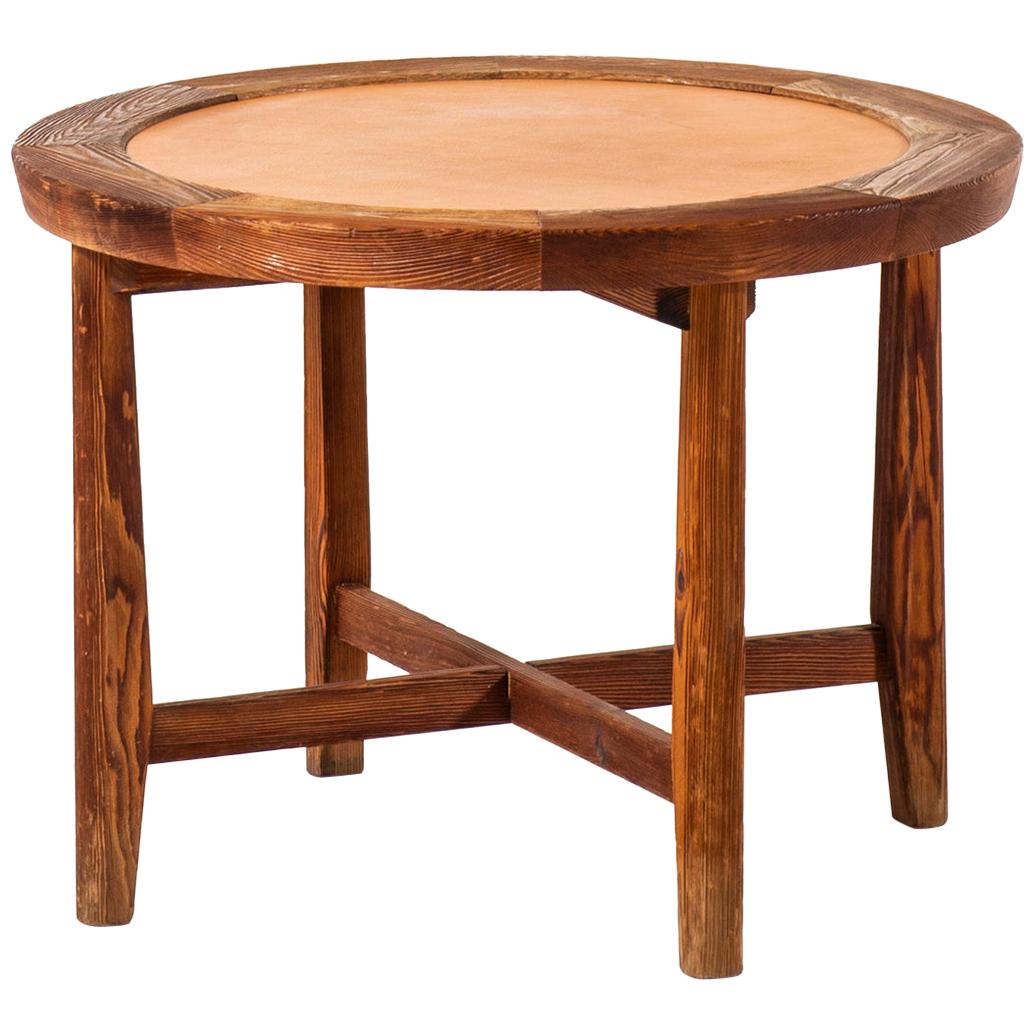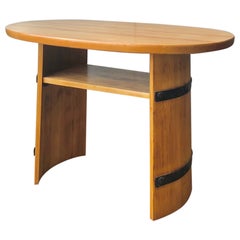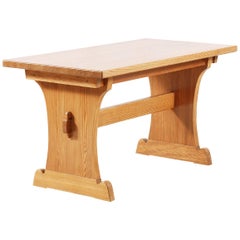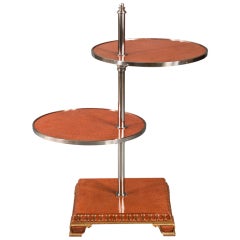
A Nickel, Parcel-Gilt and Crackled Lacquer Adjustable Table by Axel Einar Hjorth
View Similar Items
A Nickel, Parcel-Gilt and Crackled Lacquer Adjustable Table by Axel Einar Hjorth
About the Item
- Creator:Axel Einar Hjorth (Designer)
- Dimensions:Height: 30.75 in (78.11 cm)Diameter: 16.5 in (41.91 cm)
- Style:Scandinavian Modern (Of the Period)
- Materials and Techniques:Lacquer,Nickel,Gilt
- Place of Origin:Sweden
- Period:20th Century
- Date of Manufacture:Circa 1929
- Condition:
- Seller Location:New York, NY
- Reference Number:Seller: 91241stDibs: LU8556753722
Axel Einar Hjorth
Swedish furniture designer Axel Einar Hjorth created tables, chairs, cabinets and other pieces that were as elegant as they were functional, and he frequently worked in references to a litany of inspirations including French Art Deco, Gustavian style and modernism. Ahead of his time, his style was refined and daringly simple.
Born in Krokek, Sweden, Hjorth grew up in a foster family and at 20 moved to Stockholm where he studied architecture and design at the Högre Konstindustriella Skolan (now the University of Arts, Crafts & Design). Although he dropped out when his foster father died, he went on to work for some of the largest furniture manufacturers in Sweden during the 1920s.
Hjorth’s work was featured in the 1923 Gothenburg Exhibition world’s fair, and he exhibited a birch and cherry cabinet in the 1927 “Swedish Contemporary Decorative Arts” exhibition at the Metropolitan Museum of Art in New York. His role as the head of the furniture department at Nordiska Kompaniet (NK), an upscale department store in Stockholm, from 1927 to 1938, further brought his designs to widespread acclaim, including pieces exhibited at the 1929 Barcelona International Exposition.
At the 1930 Stockholm Exhibition, an influential event in the emergence of functionalism in Swedish design, Hjorth exhibited a dozen room settings that featured examples of sportstugemöbler. These furniture lines were named for islands in Sweden’s archipelago — Utö, Blidö and Torö — with designs intended for cabins and vacation homes. The use of solid Swedish pine in these pieces revealed a love of traditional rustic furniture while the simple forms boldly looked to the future. He also brought his eclectic influences to armchairs formed from tubular metal, blocky case pieces made from birch and upholstered sofas with neoclassical details, each exuberantly mixing form and function.
Find vintage Axel Einar Hjorth furniture today on 1stDibs.
- Axel Einar Hjorth Uto TableBy Axel Einar HjorthLocated in Los Gatos, CAAxel Einar Hjorth Uto table, Sweden, 1930s Acquired by original owner in SwedenCategory
Vintage 1930s Swedish Scandinavian Modern Tables
MaterialsPine
$65,000 - Axel Einar Hjorth Style Pine TableBy Axel Einar HjorthLocated in Long Island City, NYPine table in style of Axel Einar Hjorth produced by Aby Mobelfabrik. Pine with iron brockets. Sweden, Circa 1940th.Category
Vintage 1940s Swedish Scandinavian Modern Tables
MaterialsPine
- Axel Einar Hjorth "Sport" Table by Nordiska Kompaniet, 1930sBy Nordiska Kompaniet, Axel Einar HjorthLocated in Paris, FRRare dining table model "Sport" designed by Axel Einar Hjorth, in the 1930s. Axel Einar Hjorth (1888-1959) Manufactured by Nordiska Kompaniet, Sweden. Solid pine. Very good con...Category
Vintage 1930s Swedish Scandinavian Modern Dining Room Tables
MaterialsPine
- 1930s Axel Einar Hjorth Extesible Dining TableBy NK (Nordiska Kompaniet), Axel Einar HjorthLocated in Madrid, ESExtensible dining table designed by Axel Einar Hjorth in Elm wood and dyed Elm wood details, with two birch extensions. Produced in 1938 by Nordiska Kompaniet, tagged NK R 40001 - C8...Category
Vintage 1930s Swedish Art Deco Dining Room Tables
MaterialsBirch, Elm
- Axel Einar Hjorth, Uto Table, Nordiska Kompaniet, 1930sBy Axel Einar HjorthLocated in Los Gatos, CAThe most famous table by Axel Einar Hjorth. “Uto” for Nordiska Kompaniet circa 1930s. Beautiful patina, solid structure, original table. Also known as the “Brancusi” table Nordiska Kompaniets Verkstäder Sweden, c. 1930 pine table: 18½ H × 27½ W × 21¼ D in (47 × 70 × 54 cm) literature: Axel Einar Hjorth: Möbelarkitekt, Björk, Ekström and Ericson, pg. 130 discusses series Axel Einar Hjorth and the Sportstugemöbler By Thomas Ekstrom For more than a decade Axel Einar Hjorth had the opportunity to develop his ideas in a limitless and creative way and today, he is credited with making some of the most interesting modernist pieces, not only in Sweden, but in the whole of Scandinavia. In 1929, just two years after becoming the furniture architect for the prestigious Nordiska Kompaniet, Hjorth presented a line of furniture called Sportstugemöbler, or weekend house furniture, at the spring exhibition. The designs consisted of simple lines and construction rendered in pine that mixed aesthetics from the peasant handicraft with international modernism. Exhibition installation featuring Hjorth's Utö line of Sportstugemöbler, c. 1932. Photo courtesy of Axel Einar Hjorth: Möbelarkitekt. Besides looking great, the Sportstugemöbler line exhibits the layered artistic quality of Axel Einar Hjorth’s hand and vision. The sculptural layer is maybe easiest seen in the Utö coffee table (1932), aka the Brancusi table, a name found on a drawing in the NK archive and refers to Hjorth’s admiration of the sculptor. At the time, the office at NK had an extensive collection of magazines and books dedicated to contemporary French sculpture. In another layer you’ll find traces of Swedish society and political life. Starting in the late 19th century, the bourgeoisie began purchasing land and building large summerhouses in the archipelago. They would relocate their entire households and staff during the summer months while the men commuted by steamboat to the city for work. In the 1930s the ruling Social democrats introduced a law that gave all employees the right to two weeks of vacation every year. The working-class often used it to help parents or relatives with the harvest but the growing middle class followed the bourgeoisie to the archipelago. NK and Axel Einar Hjorth found a ground for a new market with these new smaller weekend homes. The pieces of Hjorth’s Sportstugemöbler line are aptly named after islands in the archipelago: Utö, Sandhamn, Lovö, Värmdö, etc. The Island of Utö Furthermore, Sportstugemöbler has a depth in its reference to traditional peasant art through the use of a common wood, pine. The Swedish peasantry aesthetics have for centuries been based on a pure essentiality, something the writer Carl Jonas Love...Category
Vintage 1930s Swedish Scandinavian Modern Side Tables
MaterialsPine
- Axel Einar Hjorth, "Lovö" Table, Nordiska Kompaniet, Sweden, 1940sBy NK (Nordiska Kompaniet), Axel Einar HjorthLocated in Berlin, DEA 1940s solid stained pine table, by Axel Einar Hjorth. Executed by Nordiska Kompaniet in Sweden. Model Lovö. Excellent vintage condition.Category
Vintage 1940s Swedish Scandinavian Modern Tables
MaterialsPine
